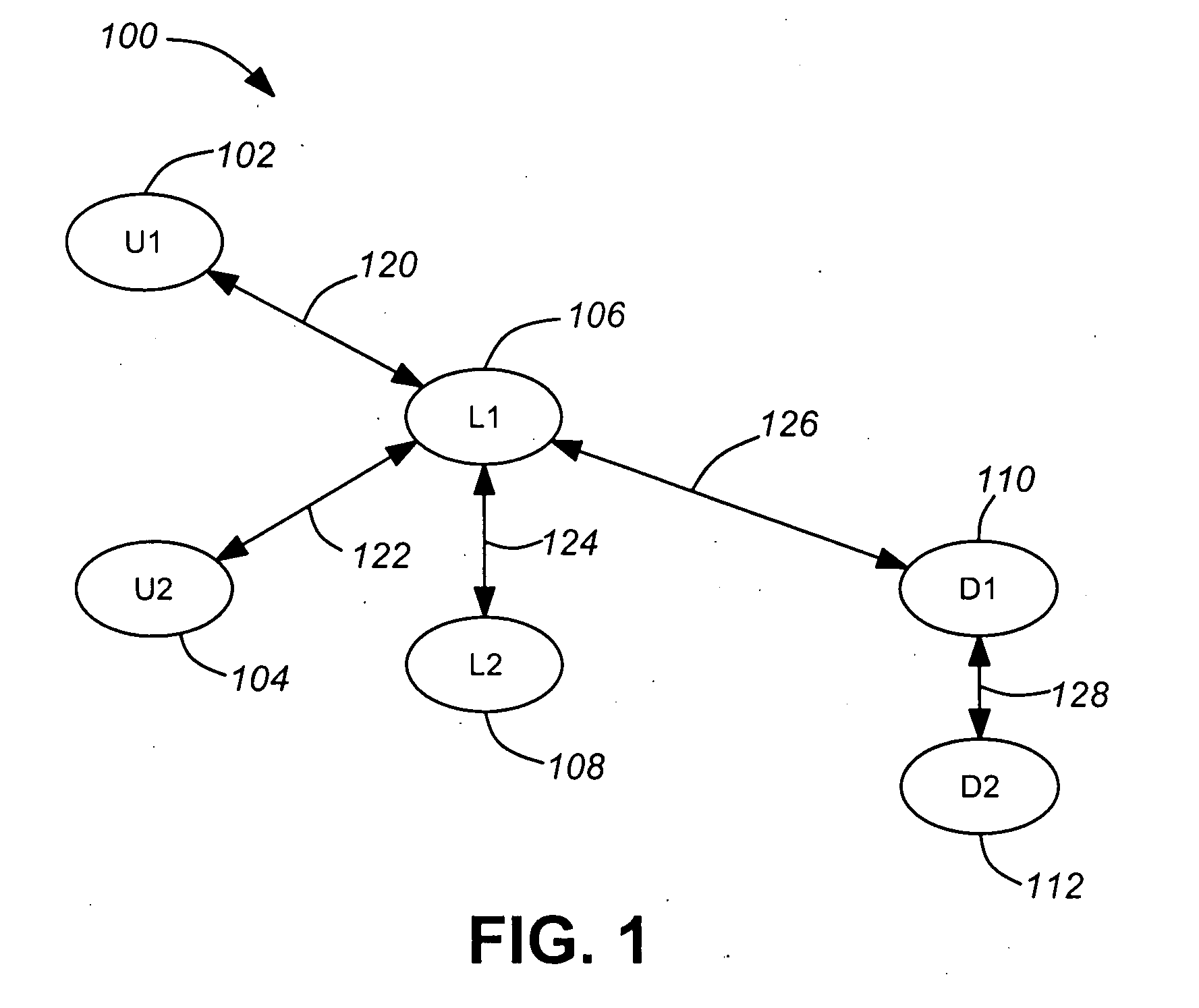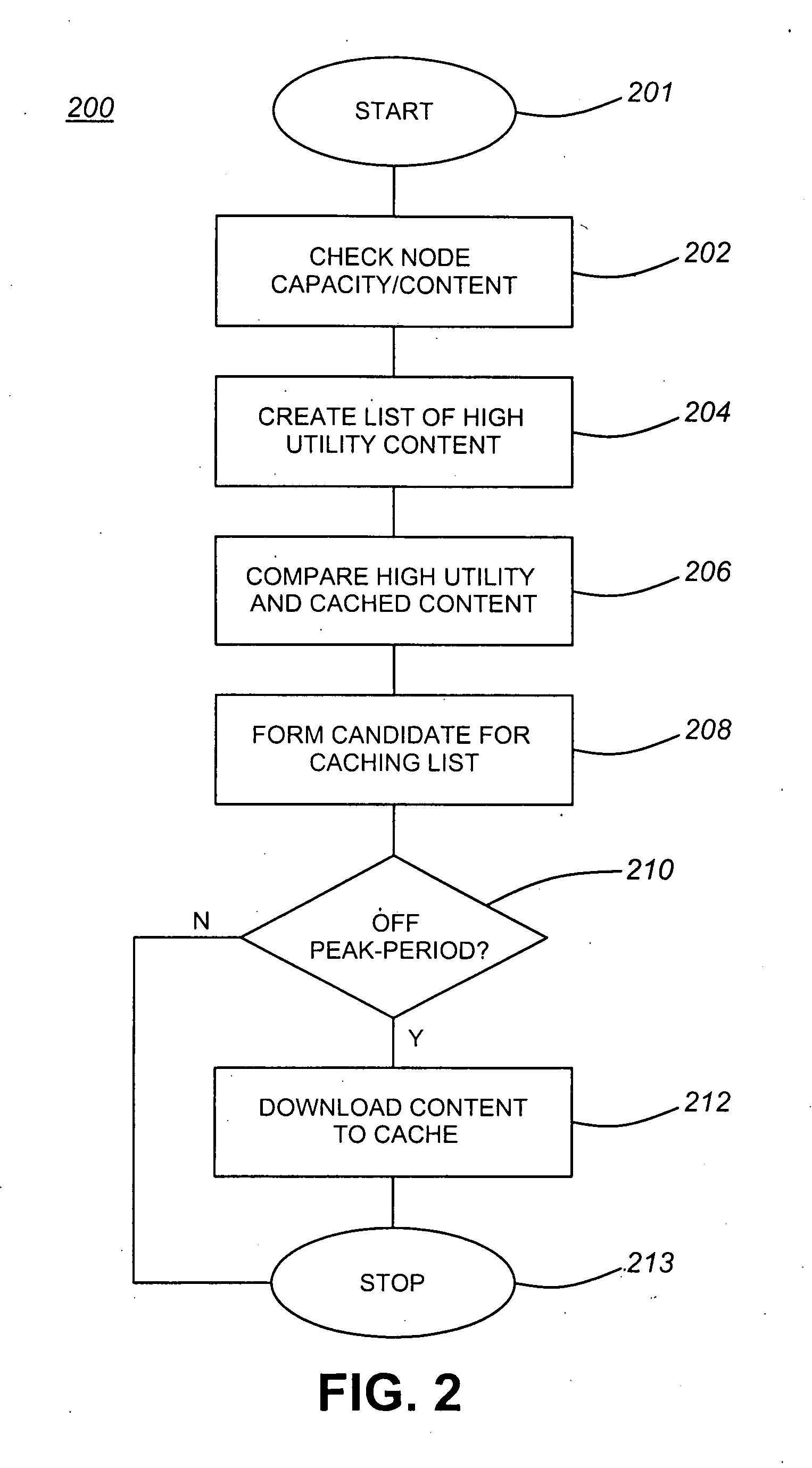Predictive caching content distribution network
a content distribution network and content technology, applied in the direction of data switching networks, digital transmission, electrical equipment, etc., can solve problems such as increasing network load, and achieve the effect of avoiding unnecessary duplication of conten
- Summary
- Abstract
- Description
- Claims
- Application Information
AI Technical Summary
Benefits of technology
Problems solved by technology
Method used
Image
Examples
Embodiment Construction
[0038]Referring now to the drawings, in which like numerals refer to like components or steps, there are disclosed broad aspects of various exemplary embodiments.
[0039]As used herein, the following terms are defined as described below. The subject matter referred to by reference characters in these definitions will be described in greater detail below.
[0040]LinkCapacity(L1→U1) means the capacity of communication link 120 when sending data from first local network store 106 to first user store 102.
[0041]LinkCapacity(U1→L1) means the capacity of communication link 120 when sending data from first user store 102 to first local network store 106.
[0042]LinkCapacity(L1→U2) means the capacity of communication link 122 when sending data from first local network store 106 to second user store 104.
[0043]LinkCapacity(U2→L1) means the capacity of communication link 122 when sending data from second user store 104 to first local network store 106.
[0044]LinkCapacity(L1→L2) means the capacity of c...
PUM
 Login to View More
Login to View More Abstract
Description
Claims
Application Information
 Login to View More
Login to View More - R&D
- Intellectual Property
- Life Sciences
- Materials
- Tech Scout
- Unparalleled Data Quality
- Higher Quality Content
- 60% Fewer Hallucinations
Browse by: Latest US Patents, China's latest patents, Technical Efficacy Thesaurus, Application Domain, Technology Topic, Popular Technical Reports.
© 2025 PatSnap. All rights reserved.Legal|Privacy policy|Modern Slavery Act Transparency Statement|Sitemap|About US| Contact US: help@patsnap.com



